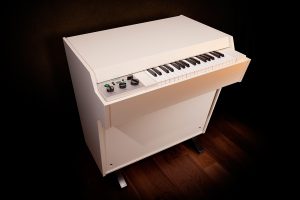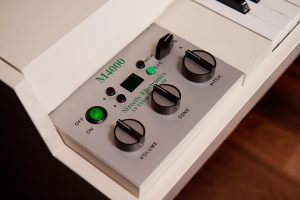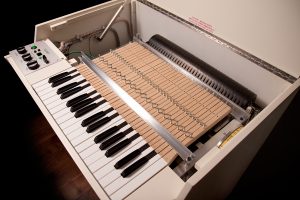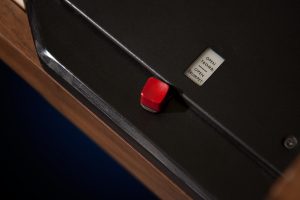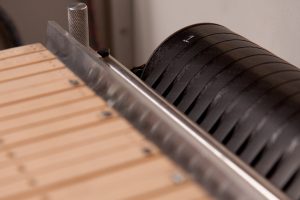An Interview with Dave Spiers of GForce Software
After Re-Tron, a faithful recreation of the Mellotron, and Re-Strings, a string machine based on rare (but historic) string ensemble devices of yesteryear, GForce Software recently released ChamberTron RE, an impressive recreation of the Chamberlin electro-mechanical keyboard, itself an ancestor of the Mellotron. Because those legendary machines are rare and expensive, many of us simply wouldn’t be able to get our hands on them if it weren’t for those adventurous developers, toiling day in and day out to reproduce them in their smallest details. So we decided to reach out to Dave Spiers, from GForce, to talk about our shared passion. Joining in the conversation are ReasonTalk team members, Joey Luck, WongoTheSane and tiker01.
Joey Luck: Hi Dave! Thanks for taking the time to talk with us and congrats on the recent release of ChamberTron RE!
Dave Spiers: Thank you and thanks for having me. Hopefully I won’t bore everyone to sleep.
Company History – from Phat.Boy to M-Tron
Joey: So let’s begin with a little background. Before joining forces with Chris Macleod and starting GMedia in 2000 and forming GForce Software in 2003, what were you up to? And how did GForce come about?
Dave: I’d played in various bands and was a tech/programmer with various artists. Immediately before GForce though, I was a partner in a company called Keyfax with keyboard player and writer, Julian Colbeck, and Chris Macleod. We did a variety of things from researching almost every synth in existence for the Keyfax book editions, to recording and editing alternative MIDI controller data for a series of products called Twiddly Bits (which I believe are still used in Yamaha Motif keyboards). One particular volume I created used NRPN templates to get filter sweeps and patterns out of GS & XG sound modules, which lead to the idea of ‘putting it in a box with knobs on.’

The result was the Phat.Boy MIDI controller which Chris largely financed and managed, and which paved the way for the various controllers we see nowadays. It was simple to use, built like a tank and, thankfully, successful. However, just like being in a band, when you’re struggling, everyone’s on the same page. When a little success starts to appear and money enters the equation, the cracks start to appear… “It’s my band.” “Yea but it’s my PA.” “It was my idea.” Etc. So in 2000 Chris and I started up on our own.
Joey: What inspired you to begin making software instruments?
Dave: With the Phat.Boy, we had several opportunities to get into big retail chains, but it never happened because there was no way of demoing it in a complete sense. What was needed was a point of sales display where someone walked up to it and made a sound from the off, but because it was essentially a dumb box, unless the store hooked it up to ReBirth or a GS/XG module, that couldn’t happen.
This was back in the very early days of software synths and I remember hearing the Koblo 9000 software synth and thinking, “We need to do something like that” to partner with the Phat.Boy. So off we went exploring that avenue. We had ambitious plans for a synth, but they were too much for the programmer we were using. So during a drive I suggested to Chris, “Why don’t we do a virtual Mellotron as a first step?” He agreed, and that’s what we did.
Our original intention wasn’t to release it, but Chris was previously Rick Wakeman’s (and Keith Emerson’s) keyboard tech so we gave a copy to Rick and a few other friends and they all went, “This is amazing. You need to put this out there.”
Although we already had experience putting things out into the world, it’s fair to say we were completely unprepared for the demand and the subsequent work. We knew it all worked great on our computers, but after releasing it, there were bugs on various people’s systems and we weren’t prepared for the avalanche of required support.
Because Chris and I worked as keyboard techs on the road, we knew that in that world you’re judged by how quickly and efficiently you can solve problems for the main attraction. So we both looked at each other and said, “If we’re gonna do this properly, we need to apply the same ethic.” I remember Chris saying, “The measure of a good company is how quickly they deal with things when they go wrong, and not how much money they make when things are going well.” That stuck.
Joey: How big is GForce Software today and what roles do you and Chris serve in the company now? Who else is on the team?
What I love about our little gang is that everyone in it lives and breathes music outside of GForce.
Dave: We started during the dotcom boom and we spotted how that madness would over-inflate companies (and people) and then subsequently destroy them when the bubble burst. So we’ve deliberately kept things small. In many ways we’re more of a collective than a hard and fast company. We have programmers dotted all over the place, we pay royalties to creators, and Chris and I juggle soot to keep things moving in an agreed direction. I’ve heard it referred to a ‘herding cats’ which always makes me laugh.
Chris runs the finances (he’s Scottish and good with money). He and our graphics chap, Ian, do all the GUI work, and Chris manages things overall. I do the audio work, manual writing, most of the patch programming and creative stuff and occasionally say, “We should do a… ” Then Chris will do some ciggie-packet arithmetic before saying “yay” or “nay” depending on our available resources.
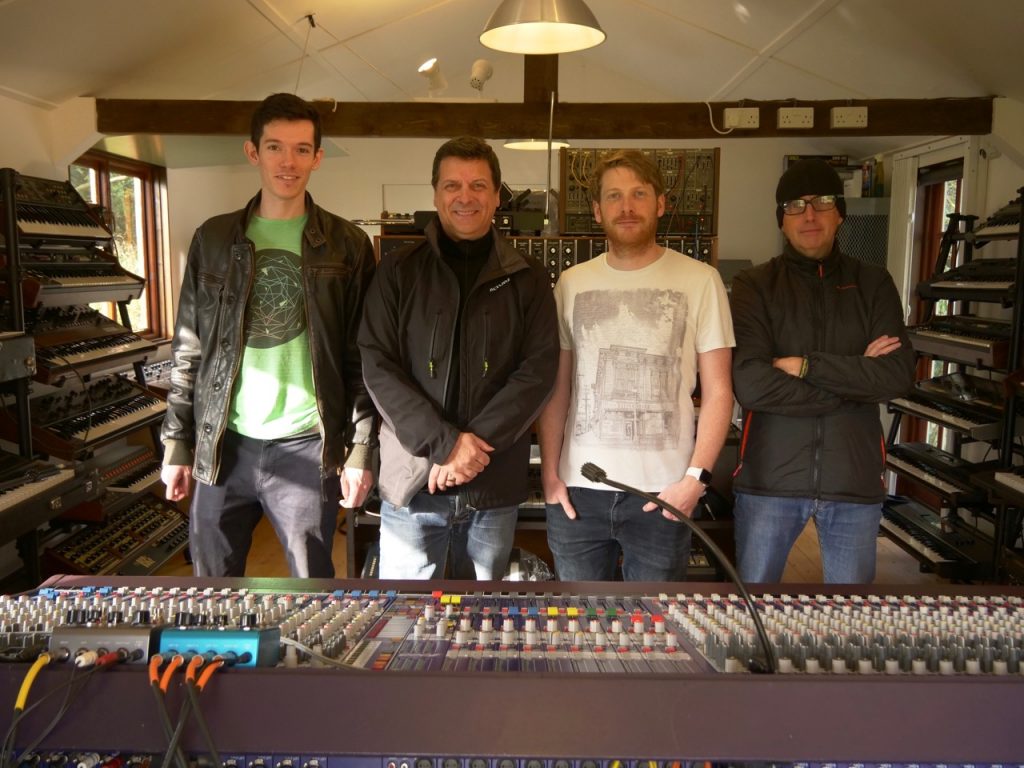
What I love about our little gang is that everyone in it lives and breathes music outside of GForce. The Rack Extension programmer, Hugo, is a great pianist and total FM synth-head. Graeme, our support chap, is a great engineer at a local studio and has his own band, Forget Gravity. Jon, the impOSCar engineer, is a dedicated guitarist and gigs several times a week. The person responsible for the M-Tron Pro & VSM code, Duncan, plays with the John Hackett Band and releases solo records. I still make time to help out a few bands and artists, and Chris and I are obsessed with synth history and the stories behind the instruments, which is how the Bright Sparks documentary came about.
Somehow it all dovetails and I’m really fortunate to be working with a diverse and smart group of people. I realized the other day that several of us have been working together since day one, 17 years ago.
WongoTheSane: Since then, what’s the most unexpected hurdle you have had to overcome when developing a device?
Dave: Any developer will tell you the last 10% of the work somehow equates 90% of the work, and beta testing is always what throws up unexpected issues and hurdles. With VSTs and AUs etc this can be exhausting because you’ve got so many formats and platforms with various anomalies and just when you think you’ve finally got it all sorted, Apple come along and change something!
Imp2 is a classic point in case. Think about this: Mac instrument and Effects versions of imp2 in AU, VST, Standalone & RTAS formats. Then for PC we’d have Instrument and Effects versions of VST, Standalone & RTAS versions. Finally, each version has three GUI sizes. That’s an insane amount of testing to the point where Jon and I used to joke about giving it all up and moving somewhere with a beach and making marimbas for a living. Hrhr
Rack Extensions – What sets the format apart?


 Joey: ChamberTron RE is your third Rack Extension following the release of Re-Strings and your initial offering, Re-Tron. You also recently released a nice update to Re-Tron. This all has come after the release of Reason 9.5 back in May, which introduced support for VSTs. Many Reason users speculated that we might not see many REs developed or updated by those developers who can simply say, “Well now you can just use the VST version.” What about the Rack Extension format has kept you developing for it? Do you just love us Reason users? 🙂 Have these REs been on your roadmap all along?
Joey: ChamberTron RE is your third Rack Extension following the release of Re-Strings and your initial offering, Re-Tron. You also recently released a nice update to Re-Tron. This all has come after the release of Reason 9.5 back in May, which introduced support for VSTs. Many Reason users speculated that we might not see many REs developed or updated by those developers who can simply say, “Well now you can just use the VST version.” What about the Rack Extension format has kept you developing for it? Do you just love us Reason users? 🙂 Have these REs been on your roadmap all along?
Dave: The Rack Extension versions are different to the VST versions in a number of ways. Re-Tron contains what we think are the best of the Streetly Tape Tron sounds and to get those sounds in the VST you’d have to buy M-Tron Pro and the Streetly Tape Libraries which adds up to a good chunk of change. What we wanted to do was give a ‘best of’ to Reason users who we assumed wouldn’t be as obsessive as many Tron aficionados, but who wanted a great set of those key sounds within an intuitive interface.
Likewise, Re-Strings has what we think are the essential sounds from VSM. Actually, Re-Strings was originally devised at the same time as Re-Tron but there was a graphics issue with the way the sounds were selected, which we didn’t think was elegant enough. So we shelved it until such time as the Rack Extension SDK gave us another option.
When we heard the Streetly Chamberlin Tapes we went, “Wow. These are fantastic and we need to get these out there.” The vast majority of the sounds on ChamberTron-RE aren’t on the ChamberTron Expansion Pack for M-Tron Pro. So that, along with the spring reverb makes it very different to the VST version.
ChamberTron-RE is very different to the ChamberTron Expansion Pack for M-Tron Pro in that again it mainly uses the Streetly Chamberlin Tape Library. This came about because people were asking for add-on packs for Re-Tron, but we knew it would screw up their existing songs if we released something that way. When we heard the Streetly Chamberlin Tapes we went, “Wow. These are fantastic and we need to get these out there.”
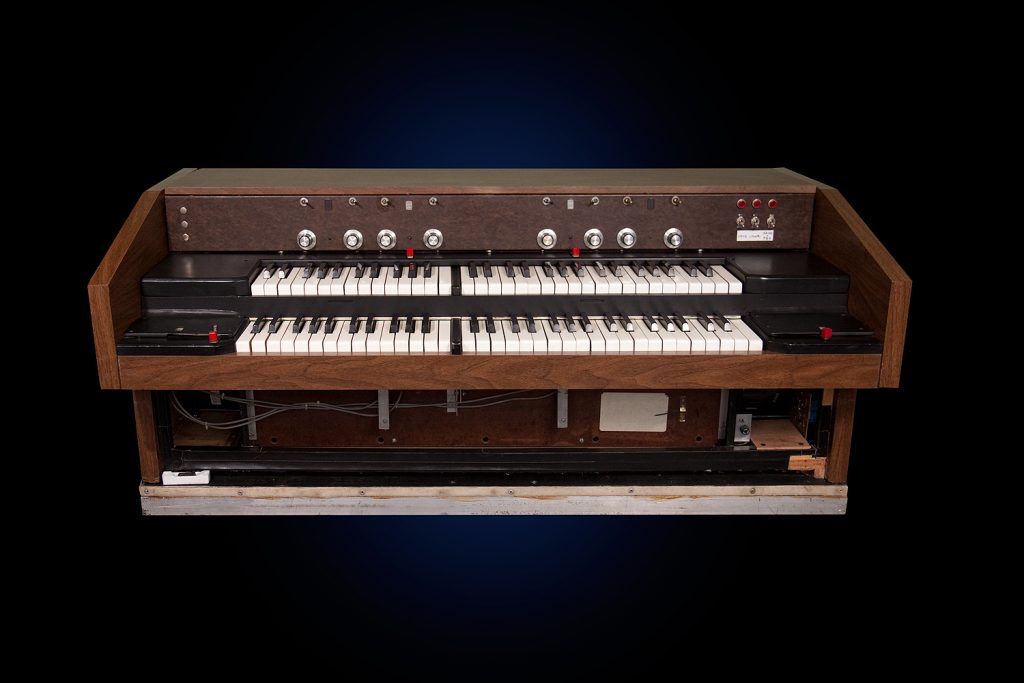
The vast majority of the sounds on ChamberTron-RE aren’t on the ChamberTron Expansion Pack for M-Tron Pro. So that, along with the spring reverb makes it very different to the VST version.
As for the Rack Extension format, we’ve always loved Propellerheads from the Phat.Boy days; when Chris and I took a prototype to Steinberg Germany and asked if he’d be interested in being our German distributor. After a demo, he replied “We’re about to distribute this really cool software called ReBirth, if you put a Mode on it which works with that, we’ll take 100 units.” Ever since then, I’ve had an affinity for both Propellerheads and the associated community. They just seem to be cool, decent people.
Finally, from a development point of view, Rack Extensions enable us to develop for a single format which saves a huge amount of time. It’s also very robust from a users’ perspective because the variables aren’t the same as with VSTs, AUs etc. And in the software world, variables often = bugs.
WongoTheSane: Speaking of which, what’s new in the recent update to Re-Tron?
Dave: More tapebanks. We were aware that people had been asking for expansion packs and, as I said before, this was problematical. However, Hugo found a way of including more sounds in Re-Tron itself, and in a way that wouldn’t screw up the patches in people’s existing songs. So we got together and said, “Let’s do a free update as a way of saying ‘thanks’ to everyone who’d bought it.”
tiker01: The whole selection of your Rack Extensions are all based on the Mellotron. And they are damn good. Based on our forum, many Reason users realized they prefer RE over VST, especially in the case of instruments. So, aside from your M-Tron suite, do you plan to make RE versions of your other plugins (such as Oddity2 or impOSCar2)?
Dave: No. We did look at it in detail, but we simply can’t do certain things in the Rack Extension format that we can with VST & AU. For example, the additive harmonic side of things in impOSCar2 could never be as elegant as we’d want it to be.
Joey: And what do you think of the new Rack Extension subscription service? Does this perhaps make the format more or less attractive for you?
Dave: I have mixed feelings about it because as a user I’m acutely aware that all those little monthly outgoings add up. However, I was discussing this whole rise in subscription models with a friend the other day, saying, “I prefer to buy music on CD, instead of a subscription to a music streaming service.” My friend retorted with, “Life itself is a subscription model and, let’s face it, EVERYTHING in life is leased.”
I definitely use Reason when it comes to my own work. More so after the release of the ChamberTron-RE because I genuinely love those Streetly Tape Banks.
I’m still trying to process that somewhat profound information, but from a developer perspective, if it makes financial sense for GForce to support that model, we will. If it doesn’t, we won’t. Propellerheads will undoubtedly understand that.
The GForce studio and tools of the trade
Joey: As seen in the lovely pictures you have provided for us (shown above) of yourself and the team in your new studio, you have lots of amazing hardware. When you write music, how do you go about recording it? Is it a mix of hardware and software? Do you record yourself playing a Mellotron or do you just turn to your trusty and convincing M-Tron plugin? With a few of your instruments available in Reason now, do you ever reach for Reason?
Dave: It’s always a combination of both, but generally if I’m in performance mode I’ll choose hardware largely because of the tactile control, whereas if I’m in composition mode I’ll mainly use software.
I definitely use Reason when it comes to my own work. More so after the release of the ChamberTron-RE because I genuinely love those Streetly Tape Banks. Also, I think Reason has carefully evolved over the years, so although my main DAW is Logic, it seems that every new update breaks my key commands which have become second nature over the years. When they suddenly stop working, or worse still, do something completely unexpected, it completely throws me out of creative mode and into panic mode. Reason has never done that.
WongoTheSane: With all these instruments recreations, how many actual synths/machines do you now have at GForce headquarters? Enough yet to open a museum?
Dave: Yes. And actually that’s been a dream of ours for longer than I can remember. In the mid 90s I recorded the opening of Martin Newcombe’s Synth Museum and at the time I remember thinking “maybe one day.”
We have about 80 instruments at last count and over the last year we’ve been renovating somewhere that will house as many of them as possible – all permanently plumbed in and ready to go at the drop of a hat. We’re at the wiring and loom phase now and while it’s primarily for us, it would be nice to allow a few select people access to it, eventually.
WongoTheSane: Amongst all these, which one would you consider the most valuable? (emotionally, not financially!).
Dave: Wow. Tricky question. I had a conversation with our repair chap, Kent, yesterday and he asked, “If you had to walk away tomorrow with three bits of kit, what would you choose?”
After a lot of deliberating I think it would be the Oberheim 8-Voice, the CS-80 and the Minimoog. The 8-Voice is basically 8 independent synths in one and there’s nothing like it in the world in my opinion. However, you have to take time and care to set it up correctly. As a polysynth it’s not ideal because each SEM has to be set up identically for a uniform sound.
Conversely, the CS-80 is an instrument I can sit at and hours will vanish. As a synth engine it’s not amazing, but if you add it all together; the keyboard action and poly-aftertouch, the ring mod, the ribbon strip, the two layers, etc., it is a synth that’s far more than its parts.
Finally, the Minimoog because of its sound, playability, history and the fact that it was the first time that synthesis became inclusive. It’s also the same one that Minimonsta was modelled on which does make it special to me. Same goes for the OSCar, which I originally bought as a back-up for Underworld, but my wife liked it so much she said “Keep it.” That later became impOSCar so, again, I’m emotionally attached to it.
Sorry, that was four pieces of equipment, but that’s about as precise as I can be.
Joey: Narrowed down from 80, I’d said you did a very good job! What would you say is your favorite GForce product? Is this like someone choosing their favorite child?
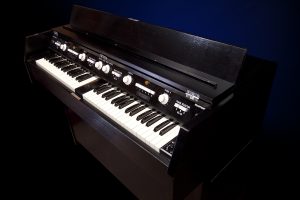
Dave: It is. However, for Chris and me, the stories behind the original instruments are just as important as the instruments themselves and in that aspect the Tron will always hold a special place in my heart. The whole story from inception and engineering lunacy, to the skull-duggery, to the influence it’s had on music for the last 50 years, to it’s instantly evocative sound.
We love the fact that most of those early pioneers never considered money as a primary reason for creating something. They were just driven to create in much the same way as a musician or artist is driven. Often, when the money men get involved things take a turn for the worse because their motivation isn’t the same as that of the founding fathers. It’s one reason why we had to do Bright Sparks – To get those stories out there.
Joey: Speaking of the stories behind the instruments, I must say that I am almost as much a fan of your product videos as I am of your products themselves! (View the ChamberTron-RE video). I may not have a question here, but just wanted to take the opportunity to offer the compliment! I enjoy and appreciate your videos which not only showcase well the instrument, but also go into the history behind it. It’s so important. This paired with the stellar sound and GUI, makes it easier to feel an attachment with the virtual instrument.
Dave: Thank you very much. I do get some criticism that there’s too much talking and not enough playing on those videos, but as I said before, we adore the history and stories behind the instruments. And there are other videos out there which have only playing of the instrument. The ‘men in sheds’ attitude is very British and I love the idea that there really was no industry as such when people like Bob Moog, Harry Chamberlin, Alan Pearlman, Don Buchla etc were doing their thing. Again, that’s why the Bright Sparks documentary was something we had to do. It was was the most amazing experience for Chris and I and we’d drive away from each interview just repeating “Wow” for the next few hours because their stories were fascinating…and continue to be so.
In fact, during that whole process, we filmed Dennis Colin, one of the engineers behind the ARP 2600 who sadly died shortly afterwards. We knew Dennis was responsible for the 1047 Multimode resonator filter on the ARP 2500 but until two weeks ago I had no idea he was also responsible for the Oberheim SEM filter too. That blew me away and I’m upset that I’ll never get the chance to talk to him about it now.
Joey: See, you’re so full of interesting information and history, we’re bound to learn something new at any moment! Since I asked you about your favorite GForce product, what would you say is your favorite non-GForce software plugin right now (instrument or effect)?
Dave: Izotope RX. I use it almost daily and every time I go, “Wow” at some point during the proceedings. It’s like magic.
RX is what gave us the idea to do what eventually became Iris. Basically, I was doing sound design for a film, using RX to isolate specific harmonics of various organic sound sources and then rendering them out to replay a composite patch via a sampler. It struck me that to do an instrument based on the filtering of spectral synthesis was a no brainer and thankfully iZotope agreed to go for it.
WongoTheSane: Back to your own plugins, how difficult is it to grab a clean copy of the original tapes (Mellotron…) and discs (Orchestron, Optigan…)? Did you have to compensate for wear and tear, either physically or electronically, or were you lucky enough to find brand new/unopened disc sets?
Dave: We’re always on the lookout for tapes and discs which can crop up in the most unlikely places. We bought the Black Sabbath Tapes from a VEMIA auction and our recently departed friend (and German Mellotron legend) Klaus Hoffmann-Hoock had a stockpile of tapes he’d carefully curated over the years which he let us use.
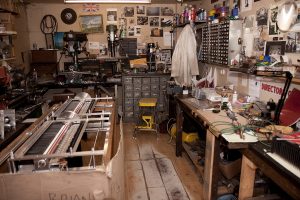
Later, Streetly Electronics gave us access to their tapes, and given their history with the Tron we obviously jumped. Particularly after they explained that the real sound of a Mellotron isn’t the master tapes – it’s the sound of EMI master tapes copied to EMI working copy master tapes, copied to the final EMI machine tapes. They claim the difference between EMI and Ampex tape is vast and given what we heard for ourselves, I’m not going to disagree.
The Orchestron and Optigan are different to the Tron in that all sound is generated via the optical sensor so the discs won’t oxidize or wear in the same way. We have a perfect condition Orchestron so that was easy to record. The Optigan we used belonged to Coil and we originally recorded various discs at their studios. Most were in great condition but some were creased or had some kind of fluid spilled on them. I think we probably didn’t bother with the latter ones 😉
Actually, in ChamberTron-RE there are some sounds where you can actually hear Harry Chamberlin talk at the end of a recording.
After recording, I had this mad idea to try and make each of the Optigan styles the same tempo so that you could mix and match them with ease. That took at least a year of work, mainly working at night and weekends with a prototype version of Izotope’s Radius software (no GUI, just command line input). Chris thought I was insane but when I finally went “Check this out” and played him some layered styles, filtered and all sitting nicely, he went “Okay, I take it back”
Then after Coil’s John Balance died we bought the same Optigan. However, it needs some attention to bring it back into 100% working order.
Any restoration work is done with Izotope’s RX. As I said before, it’s utterly indispensable. But it’s also really important not to over compensate when doing repairs or clean ups. Sometimes we’ll do test versions of the same tapes; one that’s had a lot of cleaning and one that’s had very little. Those will be sent to a few musician friends and we’ll see which ones they think have a better ‘vibe’. Often it’s the ones with minimal or no cleaning that get the vote.
Actually, in ChamberTron-RE there are some sounds where you can actually hear Harry Chamberlin talk at the end of a recording. We debated whether to trim it or keep it but in the end we kept it. It’s bound to jump out in someone’s music at some point and hopefully it’ll be a happy accident.
Joey: Wow! Now that is a really cool easter egg! I otherwise might not have been aware of it. Glad you decided to leave it in and told us about it. I’ll have to listen for that now! To wrap things up, is there anything you can share with us about what’s in store next for GForce? Any teasers you can share? Personal plans for the holidays?
Dave: Sadly, I can’t give away what’s next, because if I did, Chris and the others would beat me around the head with a telephone directory until I passed out 😉 To be honest, I used to love letting people know what we were up to, but it always lead to the questions of “when?” and “how much?” and that kinda derailed us from the objective of getting things finished. It reached peak embarrassment with imp2, so we vowed only to announce something when it’s ready and everyone is entitled to tell me to shut my big mouth beforehand.
So while there’s development work always ongoing, the immediate aim is to get the studio all functioning as we want it. If that’s done by the holidays…well…I’m guessing that’s where I’ll be spending all of it. hrhr
Joey: That’s understandable. And I’m sure many of us would love to spend the holidays in your studio! Well thanks again for taking the time to talk with us. This has been fun and I’m wide awake (certainly not bored to sleep)! Haha
More pictures!
